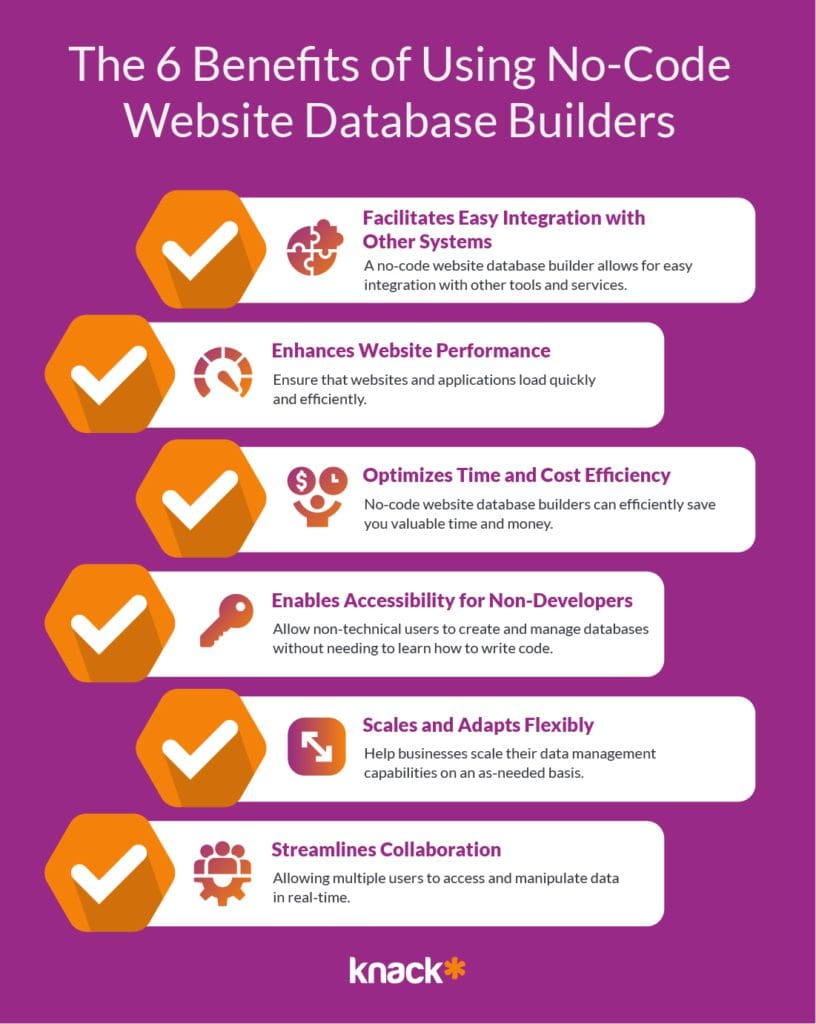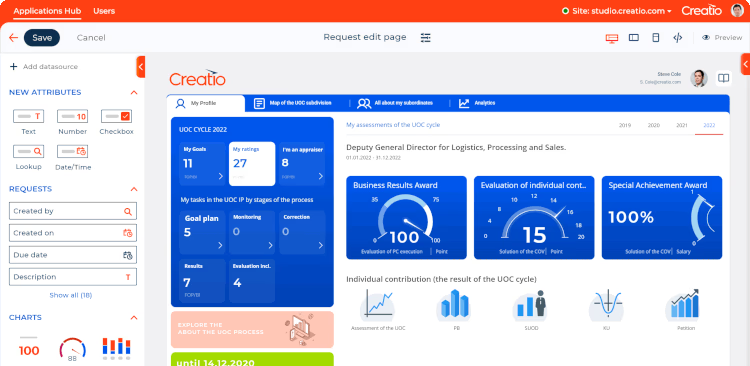No-Code Operating Systems for Open System Database Creation: Save Time and Resources
No-Code Operating Systems for Open System Database Creation: Save Time and Resources
Blog Article
Discover Exactly How Scalable Databases Can Be Used Without Coding to Enhance Your Service Workflow
In today's hectic organization atmosphere, the capacity to manage and examine information efficiently is extremely important. Scalable databases, specifically when paired with no-code options, provide a transformative strategy that empowers non-technical individuals to simplify operations. By utilizing devices that need no coding expertise, organizations can improve their functional capabilities while lessening dependence on IT resources. Nevertheless, the genuine concern hinges on recognizing exactly how these solutions can be tailored to particular organization needs and what prospective difficulties might arise in their implementation. Discovering these facets can illuminate the course to functional quality.
Comprehending Scalable Databases
Scalable databases are necessary for modern organization operations, enabling companies to successfully manage raising volumes of data without compromising efficiency. These data sources are designed to adjust and grow to the changing demands of an organization, making certain that they can handle bigger datasets and even more intricate questions as organizational needs progress.
Recognizing scalable databases involves recognizing their two main kinds: upright scaling and horizontal scaling. Vertical scaling, or "scaling up," involves adding more power (CPU, RAM) to an existing web server to enhance performance. On the other hand, horizontal scaling, or "scaling out," involves including much more servers to distribute the tons, which commonly leads to better adaptability and mistake resistance.
One more important aspect is the design of scalable data sources, which can be either non-relational or relational. Relational data sources, such as MySQL and PostgreSQL, are structured and utilize SQL for inquiries, while non-relational data sources, like MongoDB and Cassandra, offer more versatility with unstructured data.
Inevitably, recognizing scalable databases is essential for organizations intending to take advantage of data as a tactical asset, allowing them to continue to be affordable in a significantly data-driven atmosphere.

Benefits of No-Code Solutions
Unlocking the possibility of no-code solutions equips services to enhance procedures and enhance efficiency without the demand for extensive programs expertise. These platforms allow non-technical individuals to develop, change, and manage databases effortlessly, therefore equalizing accessibility to technology across teams.
One of the main advantages of no-code remedies is their rate of implementation. Companies can rapidly release applications and automate procedures, significantly decreasing the time invested in development cycles. This dexterity enables companies to react without delay to market adjustments and consumer needs, fostering an one-upmanship.
Furthermore, no-code platforms decrease dependence on IT divisions for day-to-day jobs, permitting technological groups to concentrate on more intricate jobs that need specialized abilities. This change not only optimizes source allocation but additionally advertises advancement within the company.
Cost-effectiveness is an additional benefit, as no-code options can reduce development and maintenance costs. By reducing the need for coding expertise, firms can harness the capacities of their existing workforce without the overhead of hiring additional employees.
Popular No-Code Data Source Tools
The rise of no-code options has actually resulted in the development of various data source tools that deal with companies looking for effectiveness and accessibility. These devices equip users with minimal technological know-how to produce, manage, and adjust databases seamlessly.

Caspio stands apart for its capability to develop internet applications without any type of coding. It enables organizations to produce robust databases and release applications swiftly, providing to numerous market needs. Similarly, Flair uses easy to use interfaces and powerful information management capabilities, enabling companies to develop custom applications customized to their process.

Usage Situations in Service Workflow
How can companies take advantage of data source tools to enhance their operations? Scalable data sources give companies with powerful abilities to handle and evaluate data without the demand for considerable coding expertise. These tools can improve different company procedures, inevitably causing enhanced efficiency and performance.
One prominent usage situation is customer partnership administration (CRM) Companies can utilize scalable databases to track customer communications, preferences, and comments, making it possible for personalized interaction and much better service. By centralizing this details, teams can team up much more successfully and reply to consumer needs in real-time.
An additional considerable application is supply administration. Business can employ no-code database devices to keep track of supply levels, track deliveries, and projection demand. This ensures optimum inventory degrees, reduces waste, and lessens stockouts.
Additionally, project administration can take advantage of scalable databases by allowing teams to take care of tasks, deadlines, and sources in a combined system. With real-time updates and data visualization, job supervisors can make informed decisions.
Beginning With Execution
Executing scalable data sources in business operations needs a structured strategy to guarantee effective assimilation and usage. discover this The very first step is to conduct a thorough requirements analysis, recognizing specific company demands, information kinds, and expected growth patterns. This foundational understanding will certainly assist the option of the appropriate database option.
Following, pick an user-friendly, no-code database platform that lines up with your operational objectives. no-code. Many modern services provide user-friendly interfaces, enabling non-technical individuals to take care of data effectively. After selecting a platform, establish a clear data architecture that details just click to read more how information will certainly be organized, accessed, and preserved
Training is important; make sure that staff member are equipped with the necessary abilities to make use of the data source. Think about offering workshops or tutorials to acquaint team with the system's functionalities.
Conclusion
Finally, the assimilation of scalable data sources via no-code remedies offers considerable advantages for business procedures. These platforms empower non-technical customers to effectively handle and evaluate data, promoting improved decision-making and partnership. By adopting devices such as Airtable and Concept, organizations can streamline procedures and decrease dependancy on IT sources. Eventually, leveraging these modern technologies can cause enhanced productivity and functional efficiency, placing companies for sustained growth in a competitive landscape.
One popular no-code database device is Airtable, which combines the capability of a spreadsheet with the power of a database.Exactly how can businesses take advantage of data source tools to improve their procedures? Services can utilize scalable databases to track consumer interactions, preferences, and feedback, making it possible for customized interaction and better service.Carrying out scalable data sources in business operations needs an organized method to make certain effective integration and application.In conclusion, the assimilation of scalable data sources via no-code solutions offers considerable advantages for company operations.
Report this page